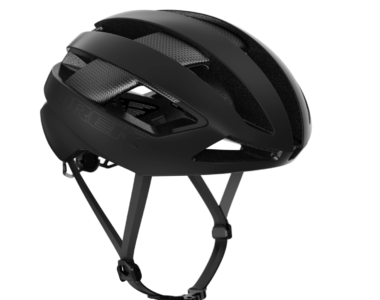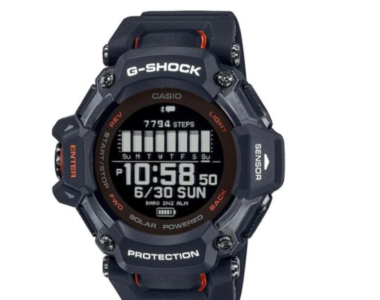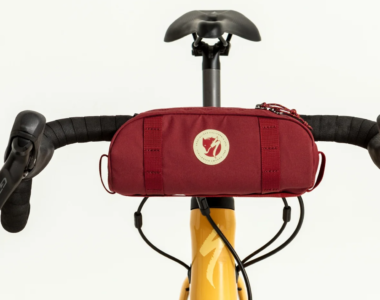No products in the cart.

The Zwift Hub One smart trainer introduces a novel single-sprocket mechanism, cleverly sidestepping the complex and often costly challenge of accommodating various cassette types for users and manufacturers.
This innovative approach eliminates the traditional cassette in favor of a single sprocket, coupled with virtual shifting for resistance adjustments.
This design not only simplifies the process of switching bikes on the trainer but also enhances compatibility with less common drivetrain configurations.
While there may be a slight compromise in the tactile experience of shifting, the virtual system compensates with its smooth, evenly distributed resistance changes, offering a unique and efficient training solution.
Construction and set up
The Zwift Hub One, launched as part of Zwift’s foray into direct drive trainers, stands out with its single sprocket design, following a legal resolution with Wahoo. Unlike the standard Hub, which uses a conventional cassette, the Hub One introduces a single sprocket alongside virtual gears, ensuring compatibility with 8-12 speed drivetrains. This design significantly reduces the hassle and expense of swapping cassettes for different setups, marking a departure from other top smart bike trainers.
The setup process is straightforward. The Hub One comes with a 14-tooth sprocket pre-installed in a plastic body, replacing the typical cassette mechanism. Attaching a bike involves selecting a mid-range gear, with most setups aligning after a shift or two. The trainer accommodates a wide range of drivetrains (9-12 speeds, Shimano, SRAM, road, and MTB) with ease.

Connectivity
However, if the bike’s shifters are mistakenly used, the chain’s noise against the Hub’s protective discs promptly encourages a correction, preventing damage. Once operational, the Hub One’s resistance adjusts automatically to the selected gear ratio, offering a consistent range of resistance across different gearing setups.
Virtual shifting, a key feature of the Hub One, is managed via the Click wireless control, a simple device with two buttons for adjusting resistance. This can be attached to the handlebars with O-rings, allowing for easy repositioning. An alternative control option is provided by the Zwift Play unit.
While basic gear alignment with the Hub One is straightforward, perfecting the mech alignment might require slight adjustments. Although this doesn’t impact performance as misaligned gears might, it could lead to increased chain wear over time. The generic sprocket profile suits various drivetrain speeds and brands but may not match the precise profile of specific setups, potentially accelerating wear, particularly in higher-speed drivetrains (11 and 12 speeds), where exact chain and sprocket alignment is crucial.
The Zwift Hub One smart trainer enhances the indoor cycling experience with seamless Bluetooth and ANT+ connectivity, allowing users to integrate the device with third-party apps and head units. However, the connectivity of the Click shifter, exclusively through the Zwift app, introduces a limitation; resistance adjustments via the Click are restricted to Zwift, affecting users who prefer other platforms or operate in standalone mode, although ERG mode remains controllable through alternative software or devices.

The Ride Experience
The ride quality in ERG mode mirrors that of the cassette-equipped Hub, maintaining a consistent feel across sessions. Transitioning to non-ERG mode activates the Click shifter and the trainer’s electromagnetic resistance mechanism, marking a departure from traditional gear shifting. The Click’s design demands a period of adjustment due to its unconventional operation, though its sensitivity to light touches facilitates ease of use once acclimated. The main challenge arises from its ergonomics, requiring hand movement for activation due to its size and positioning.
The Hub One’s resistance spectrum impresses with its breadth, accommodating a wide range of power outputs without limiting users to the extremes. This versatility is enhanced by the trainer’s capacity to simulate up to 1,800 watts, sufficient for most cyclists.
Innovative Resistance Adjustment
The trainer employs electromagnetism for resistance changes, deviating from mechanical gear systems. This results in a smoother, albeit less traditional, cycling feel, with distinct advantages such as uniform resistance increments across 24 virtual gears. This setup outpaces the typical range found in mechanical systems, offering finer control over effort levels without the abrupt transitions characteristic of conventional cassette spacing.
Despite these benefits, the mechanism’s response to resistance changes occasionally disrupts rhythm. Upon shifting, there’s a brief overshoot in resistance levels—a surge when increasing and a dip when decreasing—before stabilizing. This effect, generally transient and subtle, can affect pacing, as reflected in data traces showing wattage fluctuations during gear transitions.
In summary, the Zwift Hub One smart trainer presents a forward-thinking approach to indoor cycling technology, with its connectivity and unique resistance system. While it necessitates a learning curve and adaptation to its distinctive Click shifter, the trainer offers an expansive resistance range and smoother gear changes, albeit with minor pacing interruptions during transitions.

The Zwift Hub One is positioned as an appealing option for those entering the smart trainer market, priced at $600/£550. Its cost-effectiveness is notably enhanced by the absence of the need for an additional cassette, a common expense associated with other trainers when starting or switching bikes. As of February 2024, the purchase also includes a one-year subscription to Zwift, adding significant value to the initial investment.
Comparative Market Analysis
The competitive landscape at this price point includes options like the Kickr Core, which, at a similar cost, comes with a cassette and also offers a year’s subscription to Zwift. This comparison highlights the Hub One’s competitive edge in simplifying the initial setup and long-term use.
However, wheel-on trainers present an alternative, priced around $400/£350, such as the Wahoo Snap, which also comes with a Zwift subscription. These models offer cost savings and flexibility in not being tied to a specific app for functionality. The trade-off, however, lies in the noisier operation and the generally less immersive riding feel compared to direct drive trainers like the Hub One.
For existing Zwift Hub owners, an $/£80 conversion kit is available to upgrade to the single-sprocket system, allowing users to benefit from the new design without purchasing a new unit.

Specifications and Performance
- Power Accuracy: +/- 2.5%, ensuring reliable performance metrics.
- Maximum Wattage: Capable of simulating up to 1800 watts, suitable for most cyclists’ training needs.
- Maximum Gradient Simulation: 16%, providing a realistic challenge for climbing sessions.
- Connectivity: Features Bluetooth FTMS and ANT+ FE-C, offering broad compatibility with devices and apps.
- Flywheel Weight: 4.7kg / 10.3lbs, contributing to a realistic ride feel.
- Total Weight: 15kg / 33lbs, making it sturdy yet manageable.
- Drivetrain Compatibility: Supports 8-12 speed bikes, ensuring versatility across a wide range of bicycle types.
The Zwift Hub One emerges as a notable contender in the smart trainer domain, offering a blend of compatibility, convenience, and performance. Here are the key factors to consider when evaluating this device for your indoor cycling setup:
Reasons to Buy
- Broad Drivetrain Compatibility: The Hub One shines with its ability to accommodate most drivetrain configurations without the need for cassette changes, simplifying the transition between different bikes.
- User-Friendly Setup: Its straightforward setup process and the ease of swapping bikes make it an attractive option for cyclists with multiple ride options or those sharing the trainer with others.
- Consistent ‘Gearing’ / Resistance Range: Regardless of the bike’s specific setup, users can expect a uniform resistance range, enhancing the training experience by ensuring consistent performance across various bicycles.
- Dependable Performance: As a smart trainer, the Hub One stands out for its reliable operation, offering a stable and effective platform for indoor cycling sessions.
Reasons to Avoid
- Limited Virtual Shifting: The exclusive availability of virtual shifting through the Zwift app restricts the functionality when using other platforms or in standalone modes, potentially narrowing its appeal to those committed to the Zwift ecosystem.
- Artificial Gear/Resistance Feel: Some users may find the sensation of gear or resistance changes less satisfying compared to traditional mechanical shifts, impacting the immersive quality of the ride.
- Unconventional Click Shifter Ergonomics: The physical act of using the Click shifters may feel unnatural for those accustomed to traditional gear levers, requiring an adjustment period to become comfortable with the interface.
In summary, the Zwift Hub One offers a compelling mix of features that cater to a broad audience, particularly appealing to those seeking easy integration and versatility. However, potential buyers should weigh the importance of the immersive quality of their training sessions and the fl



